Amid the controversy that perpetuallysurrounds Planned Parenthood, it's easy to forget that the nonprofit organization is, first and foremost, a health care provider. It is the largest provider of sex education in the United States. Every year, 2.5 million people—men and women—visit its health centers for care and information. It administers life-saving cancer-screening tests and offers contraception. In some states, it's the only abortion provider.
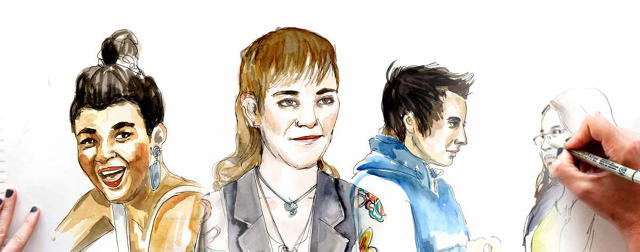
In 2014, Planned Parenthood embarked on an ambitious collaboration with the global design consultancy Ideo to hatch plans that would help the nonprofit do what it does best: care for patients. Now, as Planned Parenthood celebrates its centennial, the fruits of that collaboration are beginning to take shape. "We're about to have our 100th birthday," says Dawn Laguens, executive vice president and chief brand and experience officer for Planned Parenthood. "We have always believed that excellent care is not a luxury, and an excellent experience is not a luxury. The great thing now is because of the work of organizations like Ideo and thinking about design and its relationship to better outcomes gives us a new window to apply our longtime dedication."
Dubbed the Planned Parenthood Experience, the project is a set of six concepts that work in tandem to improve Planned Parenthood's care. They rethink everything from how employees are trained to what it feels like to wait for medical care.
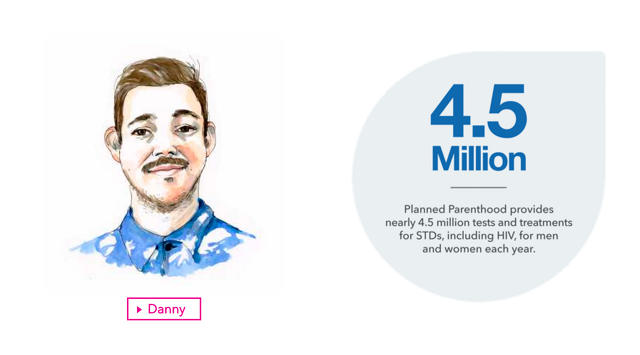
Research Informed The Process
When Ideo embarked on the project, it began by conducting in-depth interviews with about a dozen women from all around the country and all walks of life. Then the consultants went on and received feedback from hundreds and then thousands of people through workshops, interviews, observational studies in waiting and exam rooms (with permission from patients), and surveys. The goal was to gather feedback at every level within Planned Parenthood—from patients to affiliate executive leadership to health center managers—as a way to ensure a collective vision across the organization.
"We learned that women trust Planned Parenthood more than the organization was aware of at that time," says Grace Hwang, an associate partner at Ideo and executive director of its health program. "They were looking for a point of view from the organization. They wanted Planned Parenthood to be a coach as well as their provider spending time with them, educating them, caring for them. They were seeing advocacy as well, which Planned Parenthood is very intentional about today."
Moreover, the researchers found that patients come to the organization not only because they require health care but because they believe in the mission and want to be involved when they're receiving care.
Over the course of 38 weeks, Ideo and Planned Parenthood codesigned prototypes for different patient experiences and touch points. "Our goal here was to address the different patients and mindsets and the emotional states of the customer," says Susan O'Malley, a business designer at Ideo and the project leader. "Then we extended it to the staff using a tool called hybrid research where we had more than 1,000 people give feedback on what it would take for the concepts to become reality."
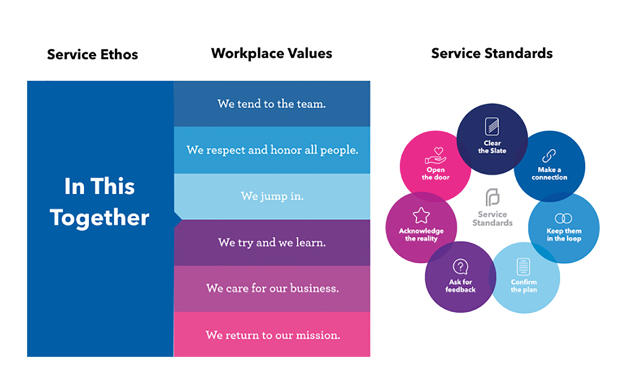
Conducting such detailed research helped Ideo determine what would be most impactful to patient experience and employee engagement, what would be feasible, and what the potential barriers to adoption might be.
It Starts With Employees
When Ideo and Planned Parenthood delved into ways to improve their operations, it always came back to the employees, everyone from health care providers to administrative staff and security. For this initial engagement, Ideo focused on the in-clinic journey a patient would take and how to make it more comfortable from start to finish. The designers thought about the critical moments—from Planned Parenthood welcoming people into the clinic to taking their medical history and providing care.
"When we first met with Planned Parenthood, the challenge was innovating on the patient experience and elevating what they were already doing well," Hwang says. "They came back to us and recognized that in order to actually deliver on that patient experience, they had to start with an employee engagement strategy."
"Patients who were seen by organizations with very high levels of engagement had better health outcomes," says Molly Eagan, vice president of Planned Parenthood patient and employee experience.
Planned Parenthood's employees are typically already passionate about the organization's mission but creating a shared set of values and codifying them further reinforces the reasons why they work there. Under the umbrella of an "In This Together" ethos, the program includes a set of workplace values and service standards along with employee training. The name—chosen to be inclusive, hopeful, and ambitious—reflects the commitment of both the national organization and local affiliates across the country to serve together. The workplace values and service standards emphasize shared responsibility and ownership, empathy in practice, collaboration across employees and patients, diversity and inclusion, and the notion that people become stronger together.
Many of Planned Parenthood's affiliates—independent organizations that operate more than 650 health centers across the U.S.—already had their own core values, which informed what Ideo and the national office formally adopted. Uniting the entire organization under one set of principles strengthens the idea that regardless of where patients visit Planned Parenthood, they'll receive the same level of care and the same experience. Moreover, it builds bonds within the organization.
For Zoe Clarke—an organizational effectiveness specialist at the Planned Parenthood North Dakota, South Dakota, and Minnesota affiliate—"In This Together" is especially resonant for how it respects all individuals. "It paves the way for employees to see themselves as part of a whole," she says. "After the video sting and shooting in Colorado, 'In This Together' gave us the framework to say no matter how you feel, there's a voice for you at Planned Parenthood."
Clarke remembers a training exercise in which she and her colleagues were recalling moments of stand-out customer service. "Someone said that if we followed the same paths, [Planned Parenthood patients] are going to be sharing these stories about us," she says. "We know people are coming to us because of an experience, and we want them to share these stories every day."
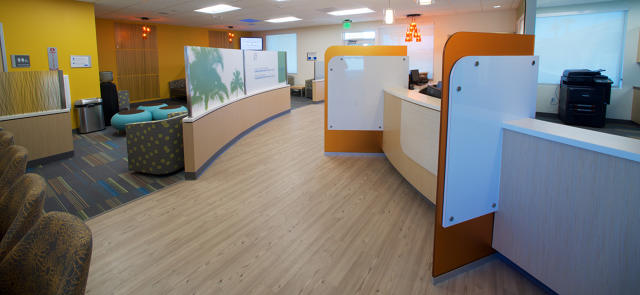
Better Interior Architecture Goes A Long Way
Since Planned Parenthood can only do so much to control what happens outside of its facilities—such as abortion protesters congregating around the health centers—refining the in-clinic experience became all the more important to make patients feel comfortable.
To that end, Ideo staged workshops to figure out best practices that could feasibly be rolled out to all of Planned Parenthood's 650 centers nationwide. It convened groups of architects, designers, operations leads, and health center staff on multiple occasions to prototype the "Hub and Recovery" zone concepts. The affiliates—independent local and state offices that operate under Planned Parenthood's name—are tasked with implementation based on their own schedules. Some have already begun the process.
Research involved intensive sessions in which employees shared stories of what they felt were great customer experiences. Those were then refined into guidelines for "welcoming waiting rooms" and "restorative recovery areas" for patients and their partners to use after abortions.
The "Hub and Recovery" concept is based on modular concepts that are easy for affiliates to adopt, such as creating areas where groups of people can sit together. Through its research, Ideo found that people often come for care with a partner or friends, and organizing furniture in semi-private groups makes it more comfortable. Chairs designed to be more private offer a "nest" for those seeking quiet space for themselves. The concept also calls for a communal table to make waiting more casual. Lastly, it specifies listing a full menu of services to help communicate everything Planned Parenthood is able to do for patients.
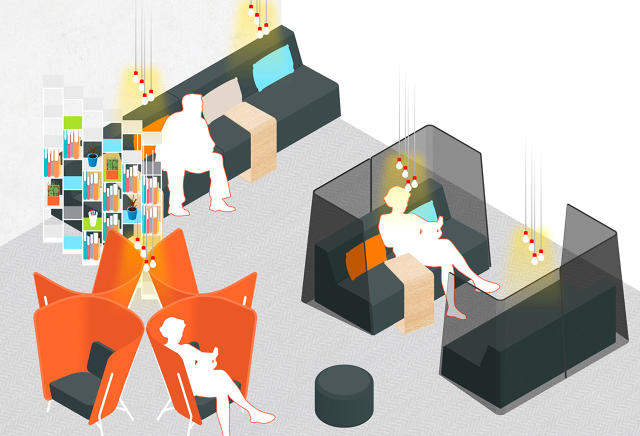
Judy Tabar, CEO of the Southern New England affiliate, has seen the benefits of human-centered design. Within the last year, she has opened three clinics (and there are three more in the works). The most recent one opened a couple of months ago and incorporates the recommendations from Ideo, such as making the waiting and exam rooms more light-filled and colorful. One patient, who had been to both an old and a new location, commented that the latter made her feel safer. "She said, 'It's so light and bright and the other health center was dark and it felt scary,'" Tabar says. "Something as simple as the lighting has a big difference on the patient experience—it makes them want to come back, and they feel more connected with their provider."
Additionally, this location also includes a "technology counter" that offers a place for visitors to charge their phones. Some of the other human-centered initiatives that Tabar has instituted in the other two new facilities she's opened within the last year include round tables instead of desks in exam rooms to make conversations between patients and providers more intimate and positioning bathrooms near the lab so patients don't have to carry urine samples more than a few steps.
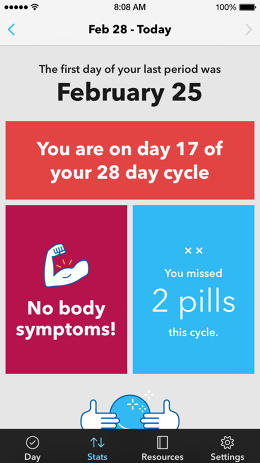
Expanding Into The Digital Realm
The "Hub and Recovery" spatial design concepts and "In This Together" employee engagement program are very much underway at Planned Parenthood, but the organization is still developing new initiatives that it plans to roll out in the future, such as streamlined medical paperwork called "Friendly Forms." An app called "Visit Companion" will allow patients to communicate with providers about care and services before and after an appointment. One of the digital programs that is closer on the horizon is Spot On, a period and birth control tracker developed in partnership with Small Planet.
Ideo also built a microsite for the experience project so that the concepts and mission are more transparent to anyone who is curious about what's happening within Planned Parenthood.
"There's this level of complexity in health care right now, especially with all of the [policy] changes that are happening," Ideo's Hwang says. "This was really a project about creating a shared language, service standards, and corresponding patient-facing concepts so that we might amplify the care and relationship between Planned Parenthood and its patients. We wanted patients to say, yes, this is a mission-led experience that I recognize and I experience every time I go to Planned Parenthood."
The Planned Parenthood Experience is a savvy move. It demonstrates how the organization is working to improve the lives of its patients, which it has done since the days of Margaret Sanger. People who want to deny women's reproductive rights use Planned Parenthood as a punching bag. The organization has been the victim of egregious acts of violence: shootings, arson, and vandalism. There is always a looming threat that Planned Parenthood could lose government funding or be hindered by state laws (the Supreme Court, for example, is hearing a case about HB2, a Texas regulation that requires abortion clinics to meet the standards of ambulatory surgical centers). A concrete plan that puts patients first makes it a lot harder to challenge the value and importance of Planned Parenthood.
"I tend to be a little more on the political side," Laguens says. "And I'm talking 'small p' politics. But part of this is also that we get really tired of seeing the budgets for people to access health care. This idea that the place you can slash is for people with fewer resources, like these efforts to overturn the Affordable Care Act, which has extended [health care] access to so many people. This obviously isn't a political response, but I would say the work with Ideo, the belief in experience, the commitment to making sure that no matter who you are, no matter where you live, or what you're dealing with, it's the very best [care]. It's part of our rebuff to that attitude of policy makers and politicians, and it's a live and visible sign that every time somebody goes online, makes an appointment, or walks into the heath center, that we won't stand for that.
Correction: An earlier version misstated the use of cardboard mock-ups to develop the Hub and Recovery concept. The Pacific Southwest and Southern New England affiliates used it to inform their own clinic designs independent of Ideo's work.
All Images: courtesy Ideo